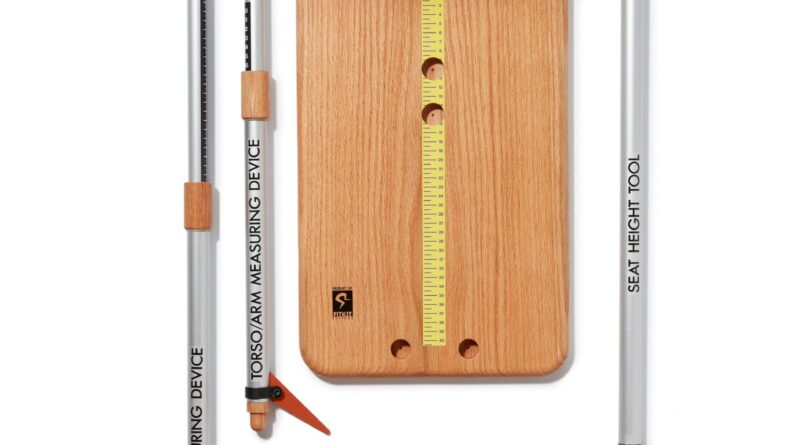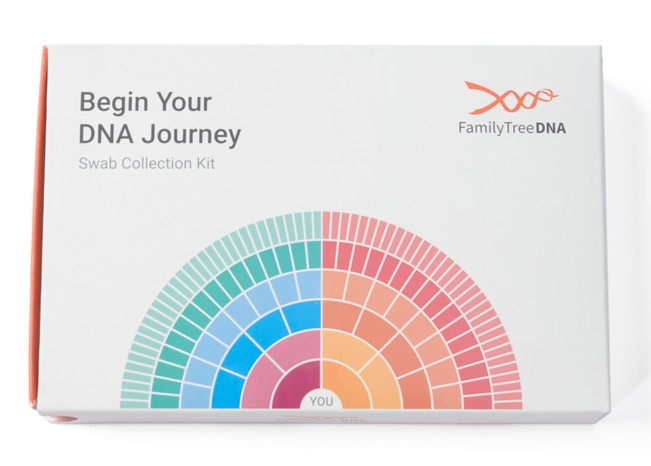
In the world of emergency preparedness, it’s crucial to find the right fit when it comes to survival kits. The question arises – should you opt for a family kit or individual kits for each member? While both options have their pros and cons, the decision ultimately depends on various factors such as the size of your family, individual preferences, and the level of self-reliance you aim to achieve. In this article, we will explore the benefits and considerations of both family kits and individual kits, helping you make an informed choice that suits your unique needs. So, whether you’re preparing for a potential disaster or simply looking to update your emergency supplies, let’s delve into the world of survival kits and find the perfect fit for you and your loved ones.

This image is property of fitkitsystems.com.
Factors to Consider
Budget
When considering whether to have a family kit or individual kits, one of the first factors to take into account is your budget. Purchasing emergency supplies can be expensive, especially if you have a large family. Determine how much you are willing to spend and whether it is more feasible to invest in a single family kit or multiple individual kits.
Personal Preferences
Another important factor to consider is personal preferences. Some individuals may prefer to have their own kit, as it allows them to have a sense of autonomy and control over their own supplies. On the other hand, some may prefer a family kit, as it promotes a sense of unity and shared responsibility in times of emergency. It is crucial to take into account the preferences and comfort levels of all family members when deciding whether to opt for a family kit or individual kits.
Family Dynamic
Understanding your family dynamic is crucial when making a decision about emergency preparedness kits. Evaluate the age and needs of each family member. If you have young children, they may require additional items such as diapers, formula, or comfort toys. If you have elderly relatives or family members with specific medical conditions, their needs must also be considered. Additionally, take into account the mobility and self-sufficiency levels of each family member. This will help determine whether a family kit, individual kits, or a combination of both is the best approach.
Purpose of the Kit
Consider the primary purpose of the kit. Are you preparing for natural disasters, outdoor activities, traveling, power outages, or health emergencies? Each scenario may require specific items and considerations. For example, if you live in an area prone to hurricanes, you may need to prioritize items like first aid supplies, non-perishable food, and water. Understanding the purpose of the kit will help you determine whether a family kit or individual kits are more suitable.
Level of Preparedness
Finally, consider the level of preparedness your family wants to achieve. Do you aim to be fully self-sufficient for a certain period of time, or are you simply looking to have some basic supplies on hand for emergencies? Evaluating your desired level of preparedness will assist in determining the type and quantity of supplies needed, as well as whether a family kit or individual kits are the best fit for your family.
Family Kit
Benefits of a Family Kit
Having a family kit offers several benefits. Firstly, it allows for a centralized location where all essential supplies are stored, making them easily accessible to everyone in your family. This promotes efficiency during emergencies, as there is no need to search for individual kits during high-stress situations. Additionally, a family kit fosters a sense of unity and collaborative effort, as everyone in the family has a vested interest in its contents and understands their shared responsibility in emergency preparedness.
Essential Items
When assembling a family kit, there are several essential items that should be included. These include:
- Non-perishable food items that are easy to prepare
- Sufficient water supply (at least one gallon per person per day)
- First aid supplies, including bandages, antiseptics, and medications
- Emergency lighting, such as flashlights and batteries
- Emergency blankets and clothing appropriate for different weather conditions
- Communication devices, including a battery-powered radio and extra batteries
- Important documents, including copies of identification, insurance policies, and contact information
- Extra cash and coins for emergencies
- Sanitation supplies, including toilet paper, hygiene products, and garbage bags
- Tools such as a multi-tool, wrench, or pliers
- Whistle or other signaling devices
- Entertainment items, such as cards or board games, to help alleviate stress during extended emergencies
Additional Items for Children
If you have children, it is important to consider their specific needs when assembling a family kit. In addition to the essential items mentioned earlier, it may be necessary to include additional items such as:
- Extra diapers, wipes, and formula for infants
- Baby food and snacks for toddlers and young children
- Comfort items, such as a favorite toy or blanket to help reduce anxiety and stress
- Extra clothing, including diapers and underwear, as accidents may occur during emergencies
- Educational materials, such as coloring books and crayons, to keep children occupied
Customizing the Kit for Different Family Members
Each family member is unique, and their emergency preparedness needs may differ. When creating a family kit, it is important to consider the specific needs of each family member and customize the kit accordingly. For example, if someone in your family has allergies or requires certain medications, ensure that those items are included in the kit. Additionally, consider any specific dietary restrictions or medical conditions that may require special attention. By customizing the family kit, you can ensure that everyone’s needs are met and accounted for.
Storage and Accessibility
Proper storage and accessibility are key factors when maintaining a family kit. It is important to store the kit in a location that is easily accessible to all family members, yet safe from potential damage or theft. Consider investing in a durable, waterproof container to keep the supplies protected. Additionally, make sure to regularly check expiration dates on perishable items and replace them as necessary. Keep a list of the contents of the kit, and mark items that need to be replenished. Regularly review and update the kit to ensure it remains well-stocked and ready for use.

This image is property of media.cnn.com.
Individual Kits
Advantages of Individual Kits
While a family kit has its benefits, there are also advantages to having individual kits for each family member. Individual kits allow for a greater sense of personal responsibility and autonomy. Each person can tailor their kit to their own preferences and needs, ensuring that they have the exact supplies they require during an emergency. Individual kits also promote mobility and portability, as each family member can easily grab their own kit in case of evacuation or relocation.
Necessary Supplies
When assembling an individual kit, there are several necessary supplies that should be included. These include:
- Non-perishable food items that are suitable for personal dietary restrictions
- Personal water supply (at least one gallon per person per day)
- First aid kit tailored to individual needs, including any necessary medications
- Personal lighting devices, such as a flashlight or headlamp, and extra batteries
- Personal clothing appropriate for different weather conditions
- Personal hygiene items, including toothbrush, toothpaste, soap, and feminine hygiene products
- Lightweight and compact communication devices, such as a cell phone or a handheld radio
- Personal identification and important documents
- Personal cash and coins
- Personal tools that may be needed, such as a pocket knife or a wrench
- Whistle or other signaling devices
- Personal items for entertainment or comfort
Personalized Items
One of the advantages of individual kits is the ability to customize them with personalized items. These items can provide comfort, alleviate stress, and help maintain a sense of normalcy during emergencies. Consider including items such as a favorite book, a journal and pen, playing cards, or a small stuffed animal. These personal touches can make a significant difference and help individuals maintain a positive mindset during challenging times.
Maintaining Individual Responsibility
When each family member has their own kit, it creates a sense of individual responsibility. Make it clear that each person is responsible for maintaining and replenishing their own supplies. Encourage regular checks to ensure that items are not expired or damaged. This personal responsibility helps instill a culture of preparedness within the family and ensures that everyone is actively involved in their own emergency preparedness.
Compactness and Portability
Individual kits allow for compactness and portability, making them easy to grab and carry during emergencies or evacuations. Opt for lightweight and compact containers that are easily transportable. Consider using backpacks or duffle bags that can be easily stored and accessed when needed. The compactness and portability of individual kits are particularly advantageous in situations where quick mobility is essential.
Combination of Family and Individual Kits
Hybrid Approach
In some cases, a combination of family and individual kits may be the most suitable approach. This hybrid approach allows for a balance between shared responsibility and individual autonomy. By having both a family kit and individual kits, you can ensure that essential items are readily available to everyone, while also catering to each family member’s unique needs and preferences.
Shared and Personal Items
When combining family and individual kits, it is important to clearly designate what items are shared and what items are personal. Essential items that are crucial for everyone, such as food, water, and first aid supplies, can be stored in the family kit to ensure accessibility for all. Personalized items, like clothing, personal hygiene products, and entertainment items, can be stored in individual kits. Clearly labeling and organizing each kit will help avoid confusion and ensure that everyone knows which items are theirs to use.
Designating Roles and Responsibilities
To effectively combine family and individual kits, it is important to designate roles and responsibilities within the family. Assign tasks such as inventory checks, restocking supplies, and regular maintenance of the family kit. Encourage each family member to take ownership of their individual kit and ensure that it remains properly maintained and stocked. By clearly defining roles and responsibilities, you promote a sense of teamwork and ensure that all aspects of emergency preparedness are covered.
Communication and Coordination
Open and ongoing communication is essential when combining family and individual kits. Regularly discuss any changes or additions to the family kit or individual kits. Encourage family members to communicate their needs and preferences, ensuring that everyone’s concerns are addressed. Establish a communication plan so that everyone knows how to reach each other in case of an emergency. By promoting communication and coordination, you can maximize the effectiveness of both family and individual kits.

This image is property of images.squarespace-cdn.com.
Building a Family Kit
Assessing Family Needs
Before building a family kit, it is important to assess the specific needs of your family. Consider factors such as the size and ages of your family members, any medical conditions or disabilities, and unique dietary requirements. By understanding the specific needs of each family member, you can ensure that the family kit is tailored to meet those needs.
Creating a Checklist
A checklist is an invaluable tool when building a family kit. It helps ensure that nothing is overlooked and provides an organized approach to gathering the necessary supplies. Start by listing the essential items mentioned earlier, and then add any additional items that are specific to your family’s needs. Break the checklist down into categories such as food and water, first aid, communication, and personal items. Having a comprehensive checklist makes the process of building the family kit more efficient and ensures that all bases are covered.
Acquiring and Organizing Supplies
Once you have a checklist, begin acquiring the necessary supplies. Start by gathering the items you may already have at home, such as flashlights, batteries, and non-perishable food. Then, gradually acquire the remaining items on your checklist. It is often more manageable to acquire supplies over time rather than all at once. Also, consider shopping during sales or using coupons to save money.
After acquiring the supplies, organize them in a way that is convenient and accessible for everyone in the family. Use storage containers or bins to keep items categorized and easily located. Label the containers and designate a specific location for the family kit. By keeping the supplies well-organized, you can easily assess what needs to be replenished and ensure that everything is always within reach.
Emergency Documents and Contact Information
In addition to essential supplies, it is crucial to include copies of important documents and contact information in the family kit. This includes identification documents (such as passports, driver’s licenses, and birth certificates), insurance policies, medical records, and contact information for family members, neighbors, and emergency services. Keep these documents in a waterproof and fireproof container to ensure their protection.
Reviewing and Updating the Kit
Building a family kit is not a one-time task; it is an ongoing process. Regularly review and update the kit to ensure that all supplies are current and in good condition. Check expiration dates on food items, medications, and batteries, and replace them as needed. Conduct a thorough inventory check every six months to ensure that all necessary items are available and in working order. Make any necessary adjustments to the family kit based on changes in family dynamic or individual needs, and continue to communicate and coordinate with family members.
Personalizing Individual Kits
Tailoring to Personal Preferences
One of the advantages of individual kits is the ability to tailor them to personal preferences. Each family member can choose the specific items they prefer, whether it’s a particular brand of food, a specific type of flashlight, or a preferred type of hand sanitizer. Personalizing individual kits allows each family member to feel empowered and in control of their own emergency preparedness.
Considering Health Conditions and Medications
When personalizing individual kits, it is essential to consider any health conditions and medications that each family member may have. Include any necessary medications, medical supplies, or equipment specific to each person’s condition. If a family member has allergies, make sure to include allergy medication, an epinephrine auto-injector, or any other necessary items. By considering individual health conditions and medications, you can ensure that each family member has what they need to manage their specific medical needs during an emergency.
Including Essential Documents
Individual kits should also include copies of essential documents that are specific to each family member. This can include identification documents, medical records, prescriptions, and contact information for healthcare providers. By ensuring that each family member has their own copies of important documents, you can reduce the risk of loss or damage to these critical records.
Ensuring Mobility and Self-Sufficiency
Individual kits should be designed to promote mobility and self-sufficiency. Choose lightweight and compact containers that are easy to carry. Consider using backpacks or small duffle bags that can be easily transported. This allows each family member to quickly grab their individual kit in case of evacuation or relocation. Also, ensure that each kit contains enough supplies to support the individual for at least 72 hours, including food, water, and personal hygiene items. By focusing on mobility, self-sufficiency, and sustainability, individual kits can enhance personal preparedness during emergencies.
Maintaining Compactness and Lightweight
Similar to family kits, it is important to maintain compactness and lightweight for individual kits. Avoid including bulky or unnecessary items that may add unnecessary weight. Stick to essential supplies and personal items that can be easily carried and accessed. Consider the size and weight of each item before adding it to the individual kits. By prioritizing compactness and lightweight, you ensure that the individual kits remain practical and easy to transport.

This image is property of images.immediate.co.uk.
Situations to Consider
Natural Disasters
Natural disasters such as hurricanes, earthquakes, or tornadoes can strike unexpectedly. Having emergency preparedness kits, whether family or individual, is crucial in these situations. Consider the specific natural disasters that are most likely to occur in your area and tailor your kits accordingly. For example, in hurricane-prone areas, focus on including supplies for prolonged power outages and potential flooding.
Outdoor Activities
If your family enjoys outdoor activities such as camping or hiking, individual kits can be particularly valuable. Each family member can have their own kit filled with essential items specific to the activity, such as compact camping gear, extra water, and lightweight nutrition options. Individual kits allow for greater personalization and ensure that each person has the necessary supplies for their outdoor adventures.
Traveling and Vacations
When traveling or going on vacation, having individual kits can be beneficial. Each family member can pack their own kit with essential travel supplies, such as travel-sized toiletries, medications, and copies of travel documents. Individual kits also come in handy if luggage gets lost or delayed during travel, as each person will still have some essential items readily available.
Extended Power Outages
Extended power outages can occur for various reasons, such as severe weather or infrastructure issues. Both family kits and individual kits are valuable in these situations. Family kits can provide essential items for the entire household, such as food, water, and lighting. Individual kits can supplement the family kit by providing personalized items such as extra clothing, entertainment options, and additional personal care items.
Pandemics and Health Emergencies
Recent events have highlighted the importance of being prepared for health emergencies such as pandemics. During health crises, both family kits and individual kits play a crucial role. Family kits can include items such as medical supplies, sanitization items, and non-perishable food for all family members. Individual kits can supplement these supplies with personal protective equipment, additional medications, and personal hygiene items. Having both family and individual kits ensures that the entire family is well-equipped to face health emergencies.
Emergency Preparedness Resources
Government Websites
Government websites are valuable resources for emergency preparedness information. Many government agencies provide detailed guidelines, checklists, and information on how to create and maintain emergency kits that are suitable for families or individuals. These websites often offer up-to-date information on emergency alerts, evacuation procedures, and other valuable resources.
Local Emergency Services
Local emergency services, such as fire departments or emergency management agencies, can be excellent sources of information and guidance. They often provide educational materials, workshops, and training sessions on emergency preparedness. Reach out to your local emergency services to inquire about programs specific to your area.
Educational Materials
Educational materials, such as books or online guides, are readily available for individuals and families looking to enhance their emergency preparedness. These resources can provide comprehensive information on what to include in your kits, how to plan for different scenarios, and how to respond during emergencies. Look for reputable sources and consider reading different perspectives to gain a well-rounded understanding.
Community Workshops
Many communities offer workshops and training sessions on emergency preparedness. These workshops are often conducted by experts and professionals in the field and can provide valuable hands-on experience and knowledge. Participating in community workshops can also allow you to connect with other individuals and families who prioritize emergency preparedness.
Online Forums and Communities
Online forums and communities dedicated to emergency preparedness are excellent resources for exchanging information and ideas. These platforms allow you to connect with like-minded individuals who may have firsthand experience or valuable insights. Participate in discussions, ask questions, and share your own knowledge to enhance your emergency preparedness.
Remember, while these resources can offer valuable information, it is important to use them as a starting point and tailor the information to your family’s specific needs and circumstances.

This image is property of Amazon.com.
Common Mistakes to Avoid
Not Having a Kit at All
One of the biggest mistakes to avoid is not having an emergency preparedness kit at all. It is easy to underestimate the importance of being prepared until an emergency situation arises. Start the process of building your kit as soon as possible to ensure that you and your family are adequately prepared.
Neglecting Individual Needs
When opting for a family kit, it is essential to consider and address the individual needs of each family member. Neglecting these needs can lead to a lack of necessary supplies and potential discomfort during emergencies. By customizing the family kit and allowing for individual kits, you can ensure that everyone’s needs are met.
Poor Organization and Maintenance
Organization and maintenance are key to a successful emergency preparedness kit. Failing to organize the kit properly can lead to difficulties in locating supplies when they are needed most. Additionally, neglecting regular maintenance, such as checking expiration dates and restocking supplies, can render the kit ineffective. Regularly review and update your kits to ensure they are in optimal condition and ready for use.
Overpacking or Underpacking
Finding the right balance when packing your kits is crucial. Overpacking can lead to unnecessary weight and bulk, making the kits less portable and practical. On the other hand, underpacking may result in essential items being left out. Carefully consider what is truly necessary and prioritize based on your family’s specific needs.
Not Prioritizing Communication
Communication is essential during emergencies, and failing to prioritize it can lead to confusion and potential risks. Establish a communication plan within your family and ensure that everyone knows where to meet, how to reach each other, and what to do in different scenarios. By prioritizing communication, you can maximize the effectiveness of your emergency preparedness efforts.
Conclusion
Choosing the right approach for emergency preparedness kits is a personal decision that depends on several factors. Consider your budget, personal preferences, family dynamic, purpose of the kit, and desired level of preparedness. Determine whether a family kit, individual kits, or a combination of both is the best fit for you and your family.
When building a family kit, assess your family’s needs, create a checklist, acquire and organize supplies, and include emergency documents and contact information. Review and update the kit regularly to ensure it remains well-stocked and ready for use.
When personalizing individual kits, tailor them to personal preferences, consider health conditions and medications, include essential documents, and prioritize mobility and compactness. Regularly review and update individual kits to ensure they meet evolving needs.
Whether you choose family kits, individual kits, or a combination of both, remember the importance of regular evaluation and adaptation. Consider different situations and prepare accordingly. Utilize emergency preparedness resources, avoid common mistakes, and cultivate a culture of preparedness within your family.
By investing time, effort, and resources into emergency preparedness kits, you can ensure the safety, security, and well-being of your family in times of crisis. Remember, it is never too early to start building a culture of preparedness that will benefit your family now and in the future.



